There are many beautiful villages in the Netherlands, but Giethoorn is something truly special. Famous in the tourist circuit, Giethoorn, a small village in the Overijssel province, also known as the Venice of the Netherlands or the village with no roads, is a place where it feels like you’re entering a fantasy world.
There is such a peaceful and quiet atmosphere, that you’ll want to stay there for a while and forget about everything else. Narrow canals, splendid houses with beautiful gardens (impeccably cared for) and the only noise coming from ducks and water splashing; this is something that you definitely don’t find every day. That is until the tourists show up! If you don’t like big crowds, then you should either book an overnight stay in Giethoorn or simply choose another Dutch village to visit. But we’ll talk about that later. First, let’s answer a few burning questions. In this article I’m gonna tell you everything you need to know if you want to visit Giethoorn. I visited Giethoorn a couple of times, because my friends coming to visit the Netherlands wanted to explore this place too.
This page includes affiliate links. If you click and purchase, I may receive a small commission at no extra costs to you.
Is Giethoorn really a village with no roads?
Giethoorn, as romantic and fairytale-like might be, is still a village that lives in modern times. Although at its beginnings it was only a collection of a few cottage houses surrounded by canals and connected with bridges, the village developed along the years, like everything else around it. There are roads that lead to Giethoorn and also inside the village. A bus will take you there, or you can go by car and park somewhere convenient. Only the old part of the village is now an interconnected network of canals, but there are walking and biking paths along these (narrow as they may be!). This is the part of the village everyone talks about and, yes, there are no cars ruining the picturesque views.
I was amazed by the fact that each house (mostly thatched cottages) sits on its own island; a small patch of land around the house, basically the garden, covered in grass and flowers. I’m pretty sure the inhabitants are competing against each other in creating the most beautiful garden in the village, because they were all so charming! In front of the house, tied up to a small dock, you’ll see the family’s boat. I can only imagine how nice it would be to wake up in the morning and take the boat to go to school or to work (although they most probably take the biking path…).
Giethoorn has no fewer than 176 bridges linking its small islands, but don’t plan on crossing them all — many are privately owned and off-limits, and there simply isn’t enough time in a day to explore them all anyway.
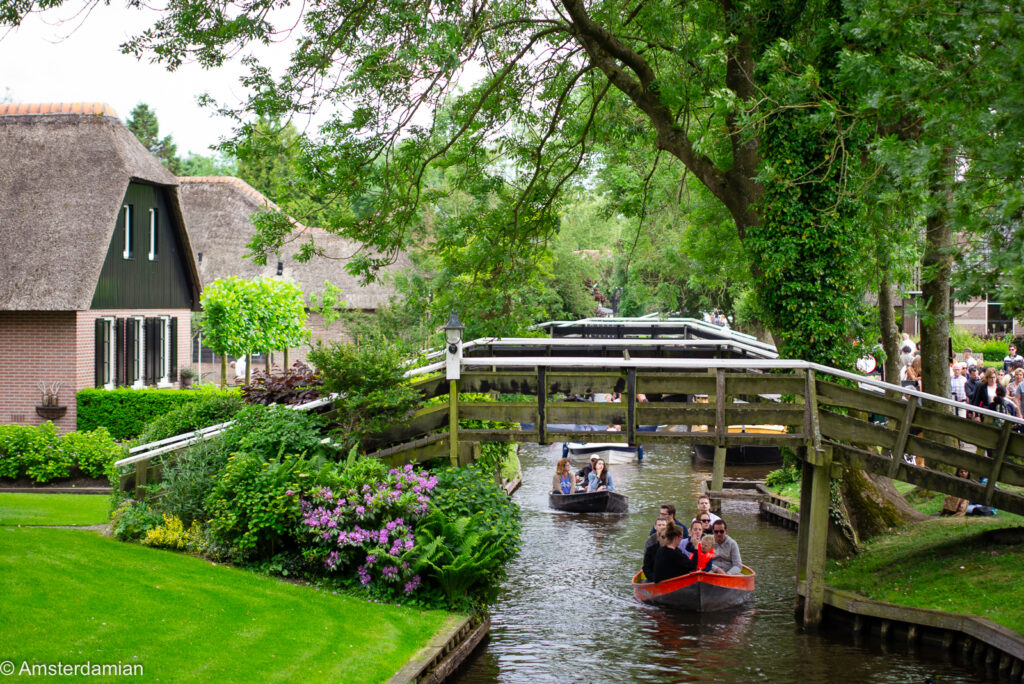
The houses on these islands are built in the 18th and 19th centuries, but renovated along the way and featuring all the modern amenities. Yes, there is modern plumbing there. No, I don’t know to explain how they’ve built it.
History of Giethoorn
The stories around who were the first settlers in this area are varied and historians didn’t reach a consensus yet. Some believe that it was founded by monks, while others point to early peat diggers as the first settlers. What we know is that the first mention of Giethoorn dates from 1225. The name of the place translates to “Goat horn” and it supposedly comes from the hundreds of goat horns (gietehorens) that were discovered there by the first inhabitants. The poor goats died in the storm surge of 1170 from the Zuiderzee. However, some say that this is just a story, as, according to linguists, “hoorn” has the meaning “corner of land projecting into the water” – so this could also be the name origin of the village (not so interesting a story though).
The canals and lakes in the area were formed through peat extraction, as Giethoorn used to be a settlement of peat diggers.
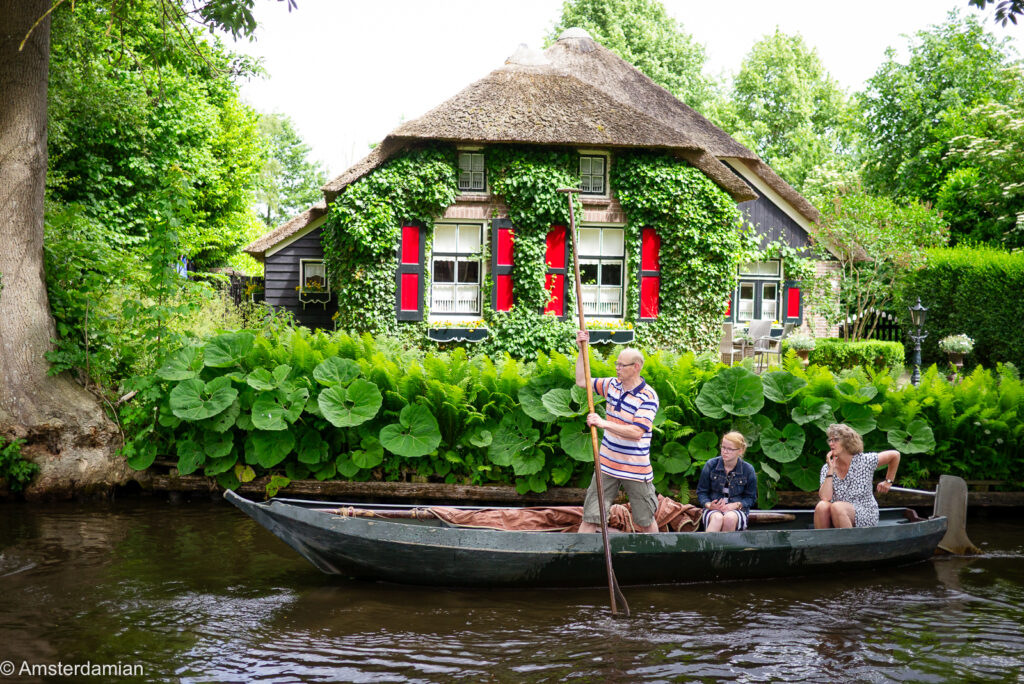
What to do in Giethoorn
The best way to experience Giethoorn is – how else – by boat. You can rent a boat to drive yourself, book a private boat tour or buy a ticket for a canal cruise on the big boats (this also comes with a guide to tell you the stories of the village). After the boat ride, take your time to walk along the canals and take in the atmosphere, visit the museums, have a drink or eat something in one of the many restaurants. You can buy your boat tickets in advance or just buy on the spot.
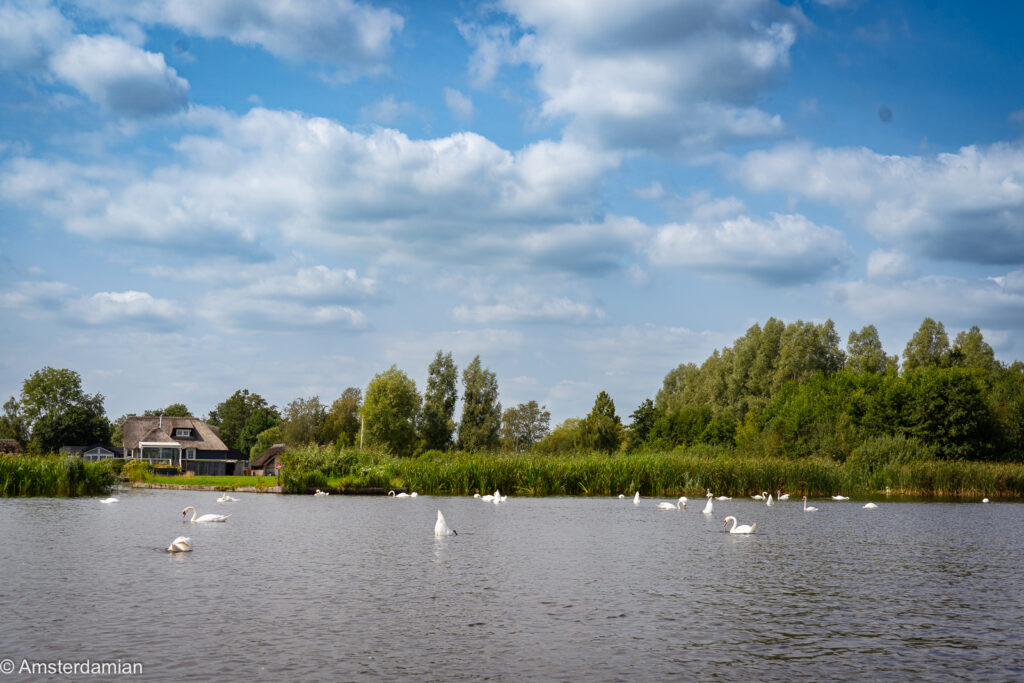
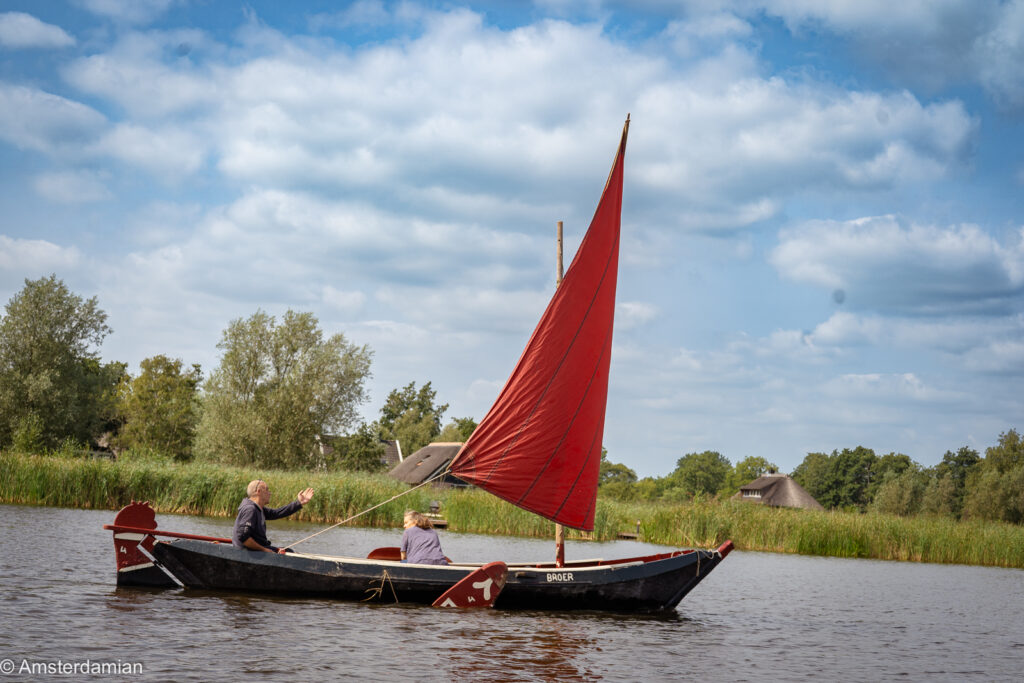
Please remember that this is not an open-air museum (even though it looks like one) and you are walking among people’s homes, so be respectful: don’t be too loud, don’t try to enter the private gardens or look through the windows.
A visit to the Museum Giethoorn ‘t Olde Maat Uus will show you how the locals lived and worked here over 100 years ago. The museum is located in a historical farmhouse and, if you are lucky, some days you’ll find there a few ladies dressed in traditional clothes, sat at a table and making pancakes.
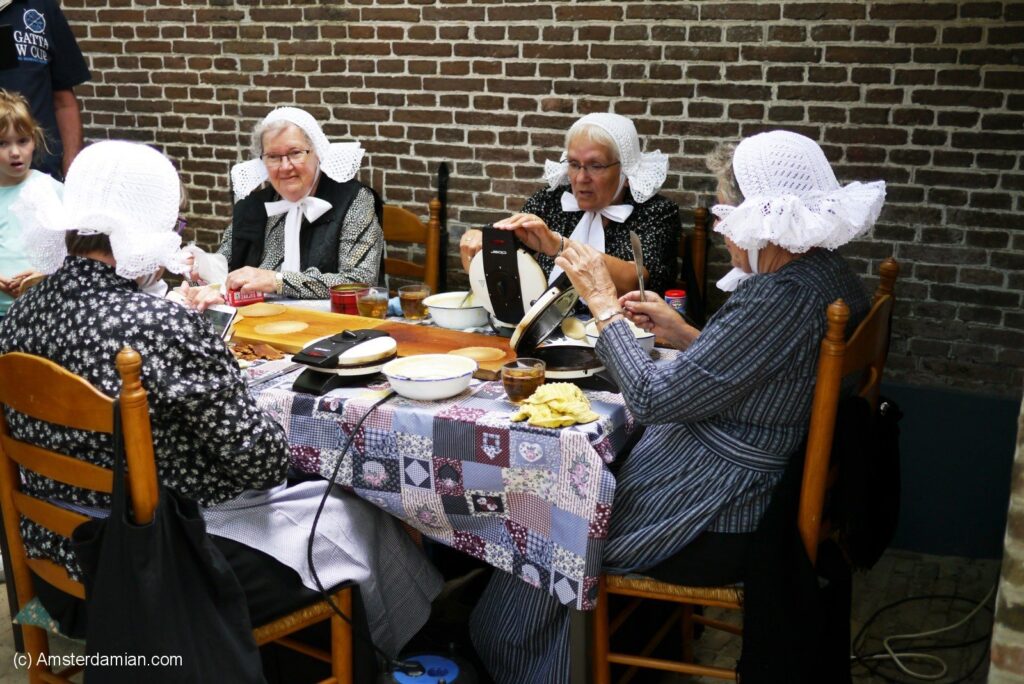
De Oude Aarde – a shop and museum showcasing collections of gemstones, fossils, minerals and jewellery.
Make sure you reserve a full day when you go to Giethoorn, so you can properly enjoy the place: ride a boat, walk around, eat pancakes or other Dutch specialties, visit a museum to find out more about the village and its history.
To truly experience the beauty of Giethoorn, without being distracted or annoyed by the crowds, you have to stay over night. After the last tourist boat moors and the last visitors leave, Giethoorn transforms into the quiet oasis it’s meant to be. On the narrow paths along the canals you’ll meet only the locals going about their business, and the occasional friendly neighbourhood cat. You can walk, admire the sunset from one of the waterside terraces, and enjoy the peaceful atmosphere.
Read about: my experience staying in Giethoorn over night.
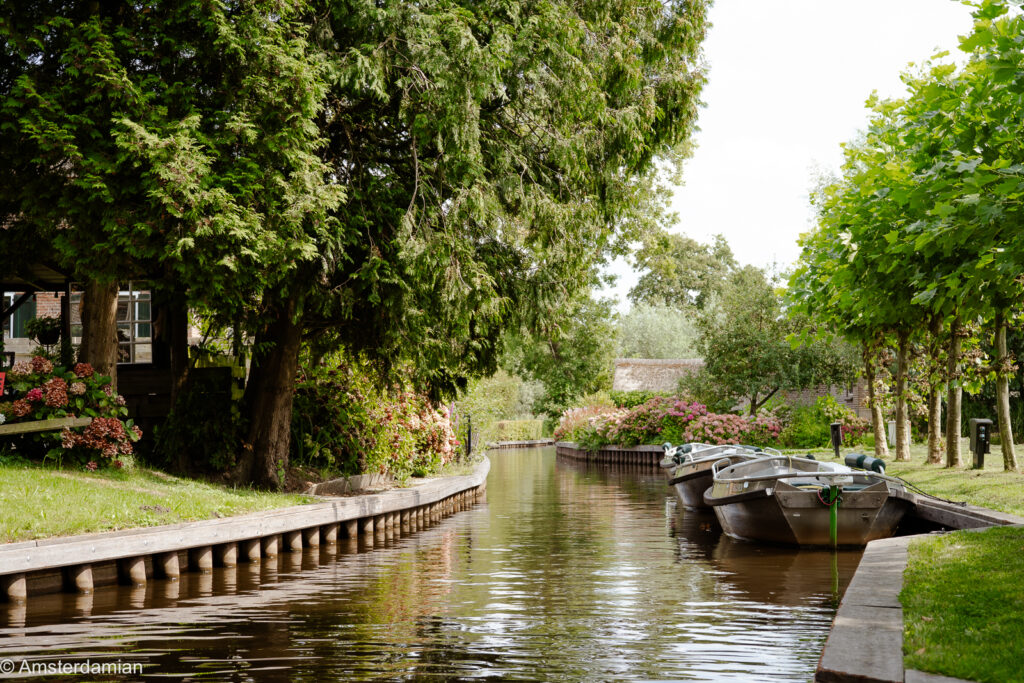
Giethoorn accessibility
While some narrow roads or bridges might not be wheelchair accessible, many parts of the village are. Also, the big cruise boats are wheelchair accessible.
Where to eat in Giethoorn
The restaurants in Giethoorn try to cater to various tastes and you’ll find here various cuisines. Don’t expect the best food you’ve ever had, but some might definitely surprise you. For a special location, you can try Smits Paviljoen, and for pancakes ‘t Zwaantje or De Witte Hoeve. But, really, it’s a matter of what you want to eat and what you’ll find available.
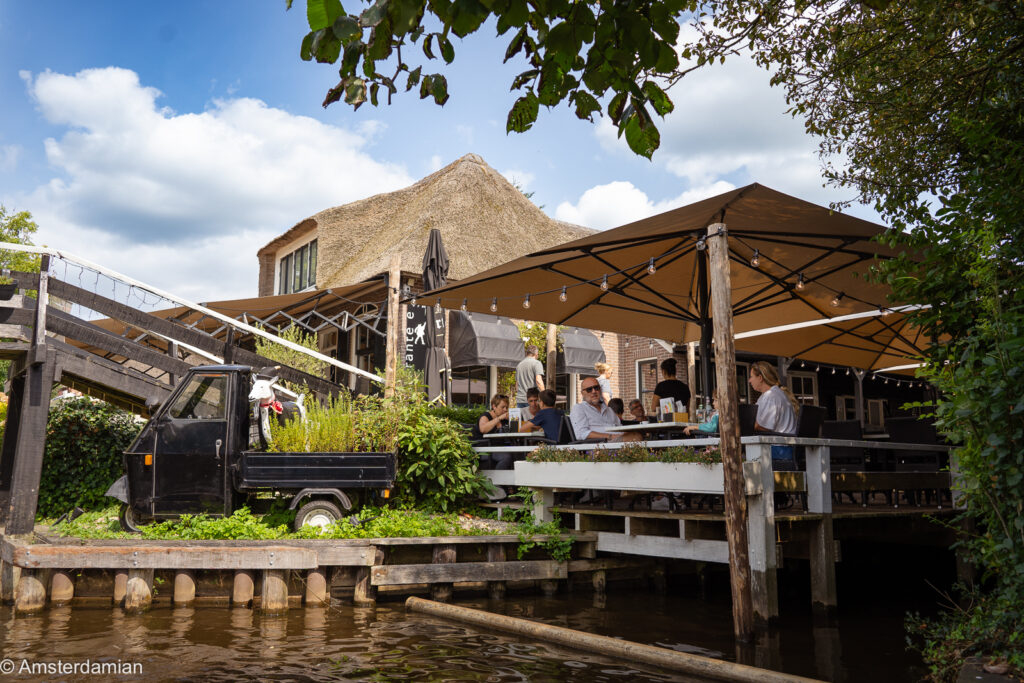
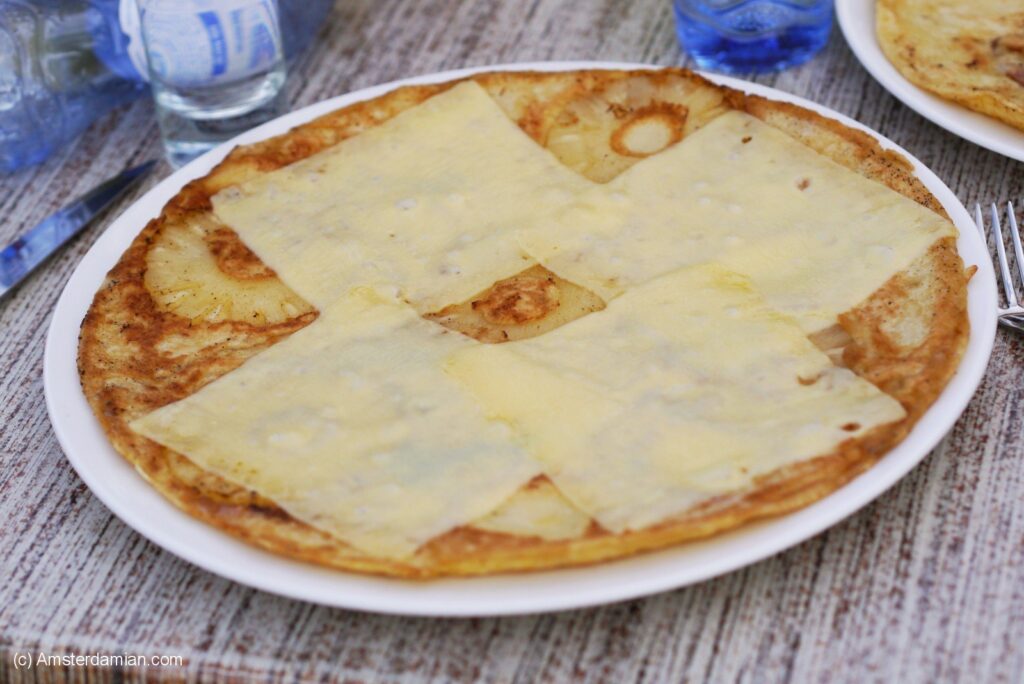
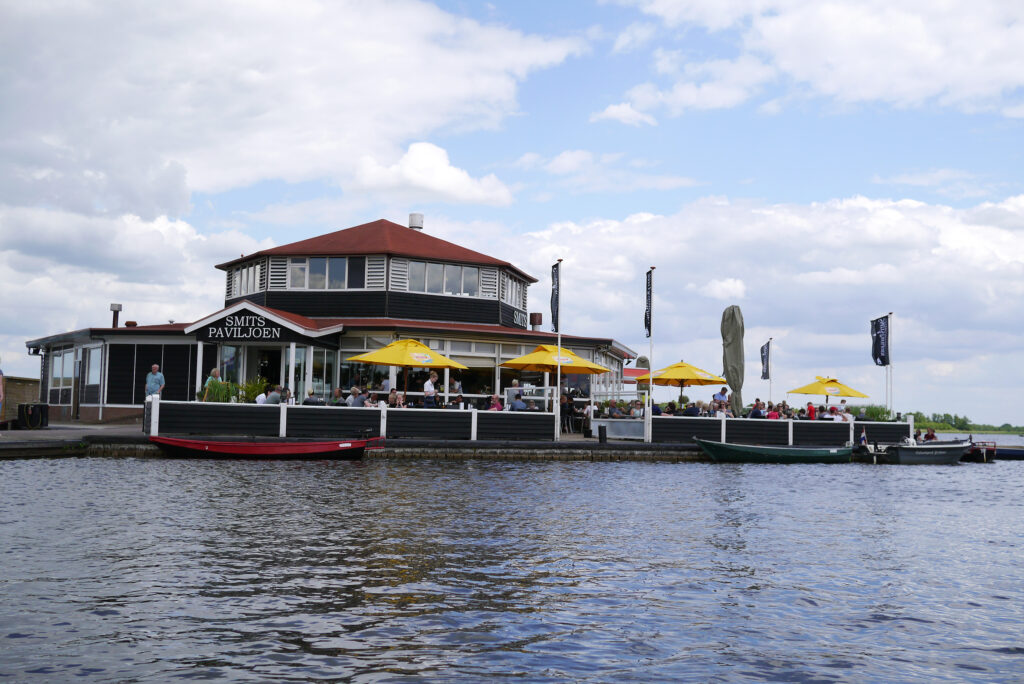
Too famous for its own good. Giethoorn and overtourism
If you talk to a Dutch person about this village that seems so fairytale-like for foreigners, they will immediately roll their eyes and proudly say they’ve never been to Giethoorn. Some, like one of my former work colleagues, might even ask what is this place they never heard of. They will immediately say it’s a tourist trap, that you should better go some place else and avoid the crowds.
However, the fact that a place is overrun by tourists doesn’t make it less beautiful and less worthy of a visit, especially for someone who’s coming from a place that is completely different from this. There are many other beautiful villages to see in the Netherlands, but there’s no other that looks like Giethoorn. If you really don’t like crowds, then choose to visit another countryside gem.
Giethoorn has indeed a huge tourism problem, generated by its heavy promotion in the tourism boards. Every year, there’s over one million tourists walking its narrow paths. Giethoorn has under 3000 inhabitants, so you can imagine the contrast! The first time the village was promoted was by the movie Fanfare, in 1958. After this, the tourism (mainly local) increased significantly, and it became the most important source of income for the village. From the 1970s onward, foreign tourists started to come as well.
In 2005, Holland Marketing opened an office in Beijing to attract Chinese tourists to the Netherlands, and was a bit too successful. The social media in the past years brought its contribution to make the place a wanted ”romantic” destination, so, here we are, with locals being overwhelmed by the sheer number of tourists and the nuisance they bring, but, at the same time, many of them making a living from the tourism.
Read more: The not so fairytale-like side of Giethoorn
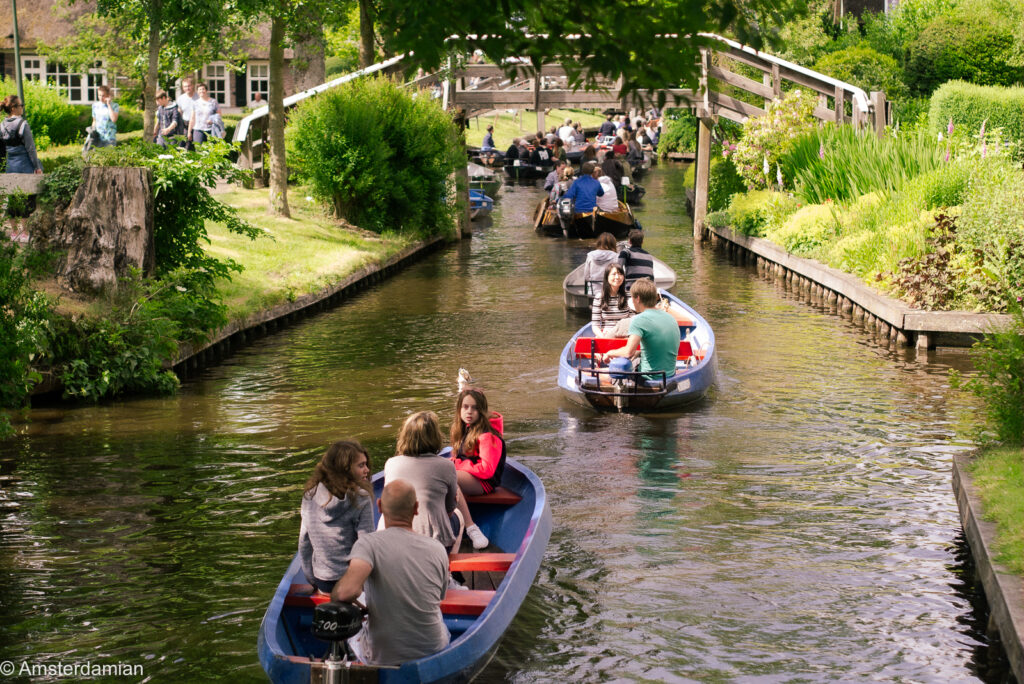
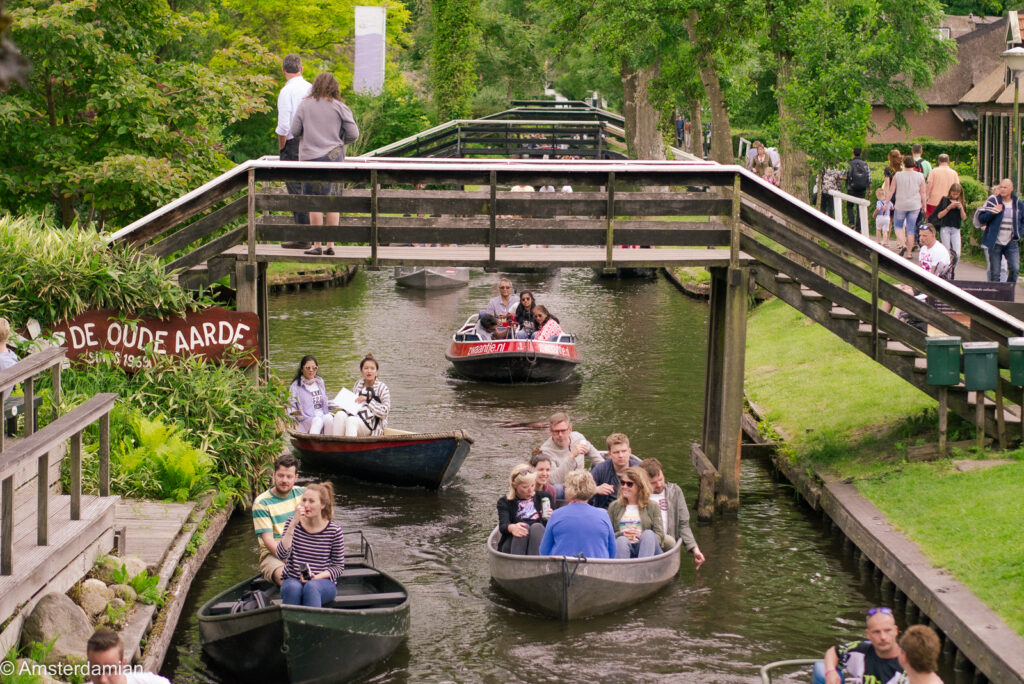
How to get to Giethoorn:
The village is over 100 km north east from Amsterdam.
- You can go there by car, and park in the big parking spaces at the entrance.
- By public transport: Use the NS Website and 9292.nl to plan your trip. From Amsterdam, you’ll have to take one of the trains to Zwolle (some train change might be involved) or to Steenwijk and then bus 70 or 71 to Giethoorn. It takes a while and I recommend you install the ns and 9292 apps on your phone to make sure you get the right transport and don’t waste time.
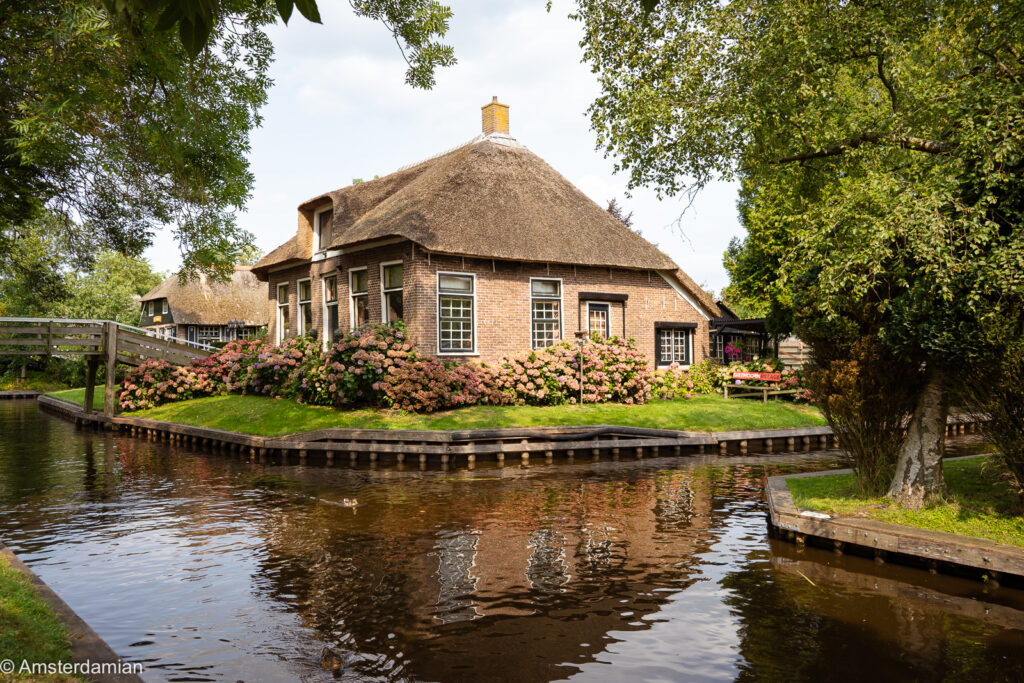
What to do around Giethoorn
If you have more time to spend in this area, you are lucky! There are many beautiful cities to visit, like Zwolle, Kampen, Hattem and Elburg (these last three are Hanseatic cities, which means they are packed with history and amazing architecture). Going a bit more to the north, the city of Sneek is another beautiful visit.
Surrounding Giethoorn, the Nationaal Park Weerribben-Wieden is a paradise for nature lovers. The park spans over 10,000 hectares and is the largest contiguous lowland peat bog area in North-West Europe. Here you’ll discover a labyrinth of ponds, lakes, ditches, mysterious-looking swamp forests, vast reed plots and flowery meadows, and a varied fauna. You can walk, cycle or ride a boat to discover the park.
I hope you found this guide useful, and you will enjoy your visit to one one the most beautiful villages in the Netherlands!
Stay tuned for more and follow Amsterdamian on Instagram and Facebook for daily stories about life in the Netherlands. Please share this post if you liked it!
Check out my photo book: Amsterdam Through the Seasons!








